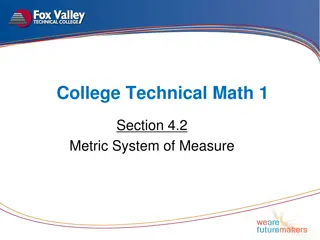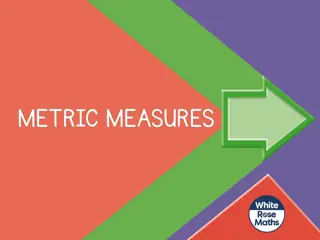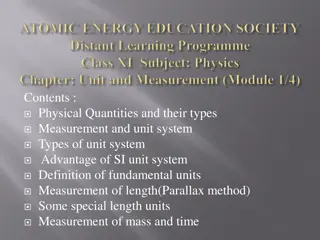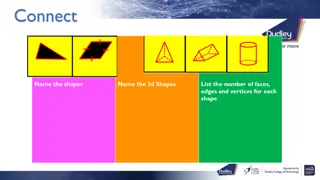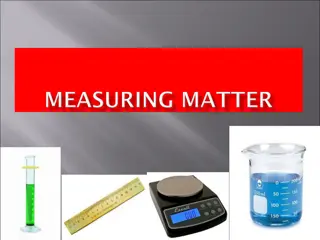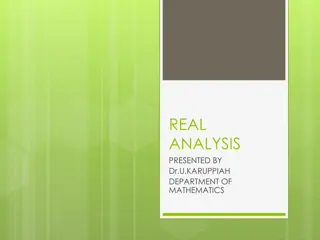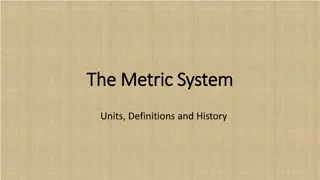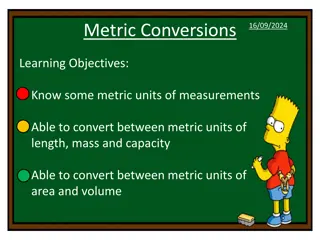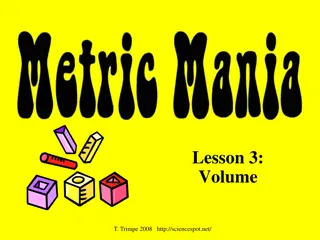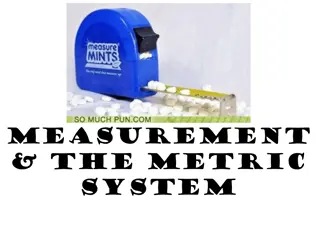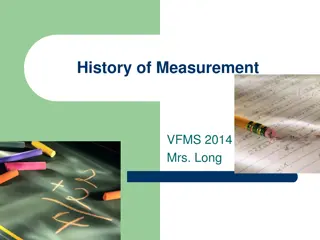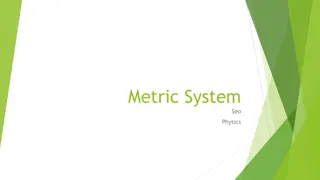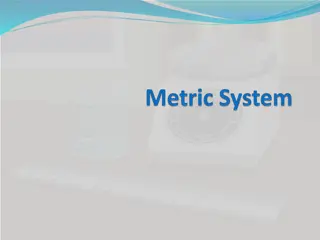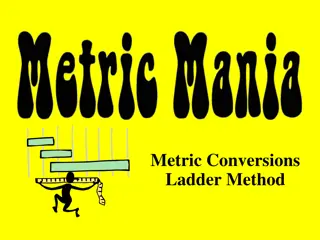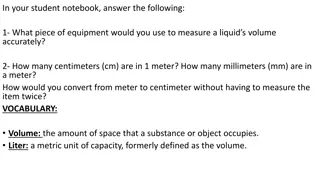Understanding Systems of Measurement: Base 10, Standard, and Metric
Systems of measurement play a crucial role in science and everyday life. This content explores the Base 10, Standard, and Metric systems, illustrating how they are used for length, volume, time, and mass measurements. Understanding the differences between these systems can help in converting units effectively and enhancing precision and accuracy in scientific observations and measurements.
Download Presentation

Please find below an Image/Link to download the presentation.
The content on the website is provided AS IS for your information and personal use only. It may not be sold, licensed, or shared on other websites without obtaining consent from the author. Download presentation by click this link. If you encounter any issues during the download, it is possible that the publisher has removed the file from their server.
E N D
Presentation Transcript
SystemeInternational Base 10 System Works for all units of measurement length, volume, time, and mass
The Standard or English System is what you are used to using in the US MOST other countries use METRIC! Length = Inch or Foot Volume = Cup, ounce, gallon Time = Second Mass = Pound
The Metric system is used for ALL sciences. Length = Meter (m) Volume = Liter (L) Time = Second (s) Mass = Gram (g)
Metric 10 millimeters = 1 centimeter 10 centimeters = 1 decimeter 10 decimeters = 1 meter 10 meters = 1 dekameter 10 dekameters = 1 hectameter 10 hectameters = 1 kilometer English 12 inches = 1 foot 3 feet = 1 yard 5.5 yards = 1 rod 320 rods = 1 mile 5280 feet = 1 mile
Base 10 allows scientists to easily change units to make numbers more manageable How many days old are you? Easier to use years huh
Science is all about combining observations into big ideas Sometimes we describe Dogs are larger than mice Sometimes we take measurments The average height of a dog is 0.56 m Those Observations must be PRECISE AND ACCURATE
ACCURATE As close to the known value as possible PRECISE Every measurement is of the same thing is close to one another
D o w n R i g h t U p L e f t 1 cm = 0.01 m 1 cm = 10 mm
1.2hL dL 3 steps down to the right = 1200 dL 340.2cg kg 5 steps up to the left 0.003 402 kg Zeros? like? ? ? 00000.34cm? should? be? deleted:? ? 0.34cm? Pretty ? zeros? should? be? ADDED? to? clarify? where? the? decimal? point? is:? .014? m? =? ? 0.014? m? Show? your? work? by? rewriting? the? numbers? and? showing? your? loops ? moving? the? decimal? ?




